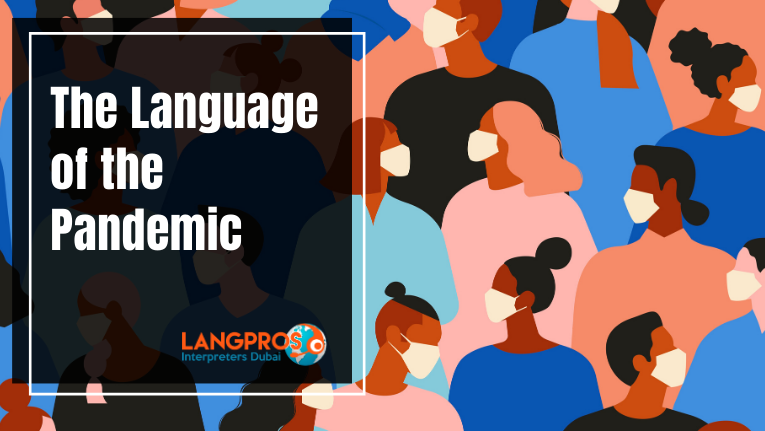Coronavirus not only deeply affected the way we live, but also the way we speak. The Internet, TV programs, and newspapers have been flooded by new words once only used by specialists. In our homes, we spend most of the time online, where the vast majority of articles, posts, and videos talk about the pandemic using (and abusing) the same terms.
Let’s take a close look at some of the most used words tied to COVID-19.
Coronavirus/ SARS-CoV-2/ COVID-19
When discussing the current situation, Coronavirus is oftentimes the preferred term. However, some might argue that it not so accurate. In fact, Coronavirus does not designate one single virus, but a family of common ones that might cause respiratory illnesses. The SARS-CoV is another example of Coronavirus.
SARS-CoV-2 is the scientific name for the novel Coronavirus. SARS is short for severe acute respiratory syndrome. The strain was first discovered in Wuhan, China, and it is believed to have zoonotic origins, meaning that the virus comes from animals. Research suggests that this virus, in particular, could come from bats.
COVID-19 is not the name of the virus, but the denomination of the disease caused by it. The extended name is Coronavirus Disease 2019, as it was first identified in December 2019.
Quarantine
People who have contracted the virus are separated from the rest of the population until their full recovery in order to prevent them from spreading the disease. This period of time is called Quarantine. The term derives from the Italian word quaranta, meaning 40, and it dates back to the 14th century, when sailors had to wait forty days to come ashore in order to stop the black plague. For COVID-19, however, the quarantine lasts 14 days after complete recovery.
The quarantine is also applied to foreign travelers coming from high-risk zones to avoid any chance of bringing new cases to the country of arrival.
Flatten the Curve
This expression refers to the way the virus spreads within the population. This progress is often represented with a chart. A steep curve is bad news, as it means that the disease is infecting new people more quickly. “To flatten the curve” means taking measures in order to slow down the natural diffusion of the Coronavirus, thus guaranteeing a better care for the illness without overloading the healthcare system.
While flattening the curve won’t simply make the virus disappear, keeping a relatively low and manageable number of active cases at any time will certainly help to give the best care possible.
R0, or R-naught
R0 is used to measure how contagious a virus can be by measuring the average number of people that an infected person can transmit the disease to. The estimated R0 for SARS-CoV-2 is about 2.2, meaning that without restricting measures each infected person will pass the virus to an average of 2.2 people. For reference, regular flu has an R0 of 1.3. Social distancing and sanitizing measures can modify the value of R-naught and ultimately defeat the Coronavirus.
Pandemic
A Pandemic is defined as an outbreak of a disease that occurs over a wide geographic area and affects an exceptionally high proportion of the population (Merriam-Webster). The word comes from the union of two Greek words: Pan meaning everyone, and Demos, meaning the population.
On the 12th of March 2020, after the rapid increase of diagnosed cases outside China, the World Health Organization officially recognized COVID-19 as a pandemic disease.
Asymptomatic
Asymptomatic means not exhibiting symptoms. The typical symptoms of COVID-19 are cough, fever, and respiratory issues. However, a person can carry the SARS-CoV-2 while being asymptomatic. This is why everyone should always take the recommended health and safety measures.
Case Cluster
A case cluster is a high number of confirmed cases within a restricted area. One of the most famous case clusters is probably the Diamond Princess Cruise Ship, where in March 2020 712 out of 3.711 passengers tested positive to the Coronavirus disease.
Contact Tracing
Contact Tracing is the process of tracking down all recent contacts a newly positive tested person made, from family members to co-workers and more. Thousands of people have been recruited to do it worldwide while smartphone apps are also becoming crucial in order to limit the spread of the virus.
Lockdown
Lockdown is a procedure consisting of confining people in safe places (such as their homes) in case of emergencies. During the pandemic, lockdown measures also include the closing of public areas, restaurants, schools, and factories to avoid contagion.
Social Distancing
Social Distancing or Physical Distancing is defined as the totality of practices that help us tackle the contagion. Even when other restrictions are eased, governments are setting safety guidelines such as keeping a two-meter distance from other individuals and avoid public gatherings to ensure community health and safety.
Langpros: Breaking Language Barriers in Times of Pandemic
While the virus might keep us apart physically, at Langpros we are pulling together in order to continue guaranteeing international dialogue and cultural exchange.
This is why our language services are still operational from remote, offering the best solution for every need thanks to our new interpreting app SmartLangPro, our Remote Simultaneous Interpretation services for online conferences, seminars, and our written localization services for every industry.
Moreover, we decided to support the struggle against COVID-19 by offering FREE remote interpreting services to hospitals, clinics, and government organizations engaged in fighting this invisible enemy in the UAE.
